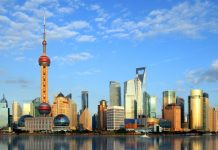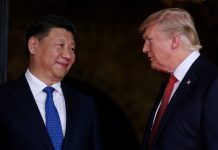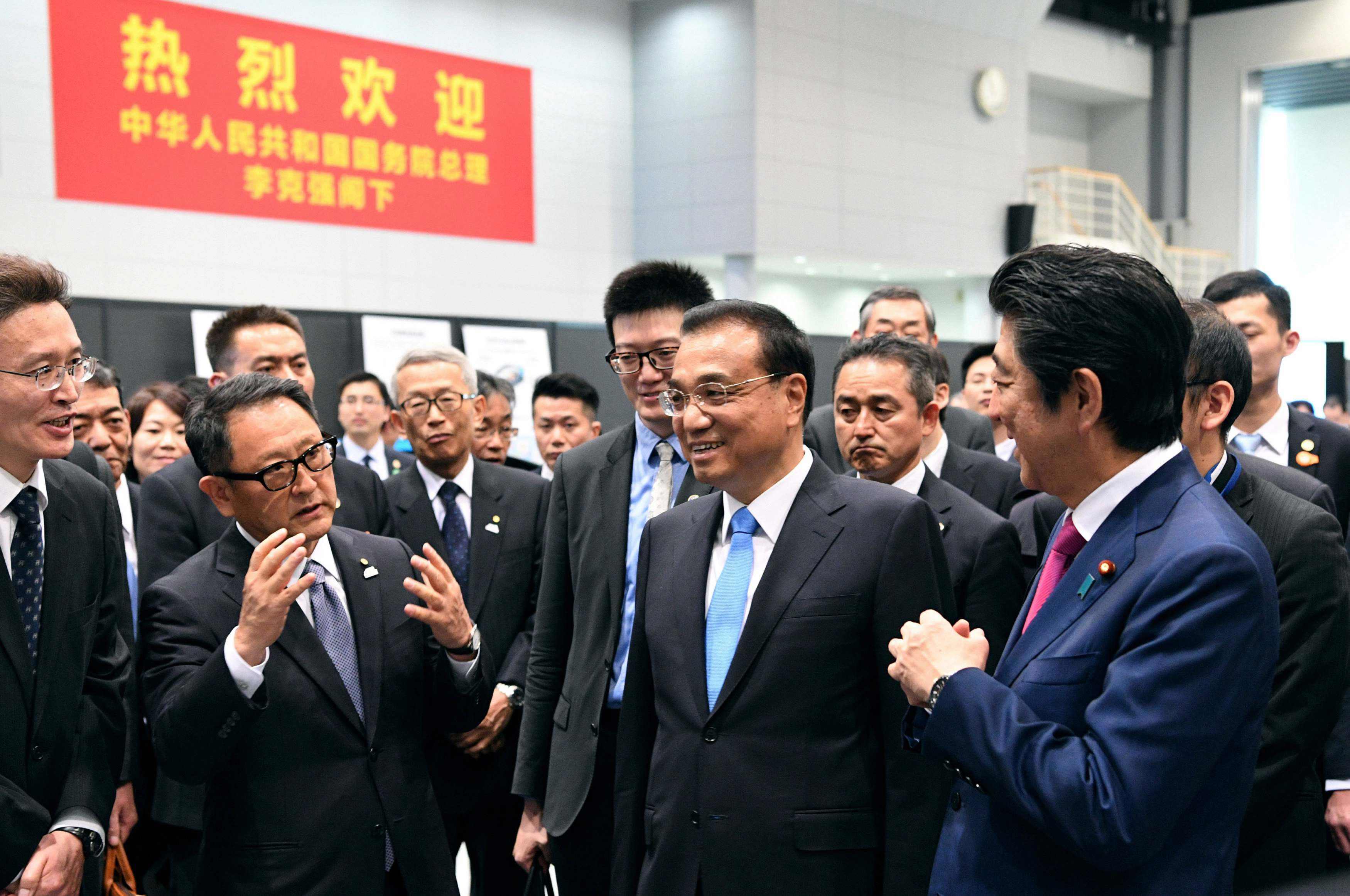China and Japan reached many cooperation deals during Chinese Premier Li Keqiang’s visit to Japan, which created conditions for stronger cooperation between localities and enterprises, and for people-to-people links.
While addressing a China-Japan Governor Forum on Friday in Sapporo, capital of Japan’s northern island of Hokkaido, Li said the two sides agreed to carry out cooperation in innovative development and launch innovative dialogue mechanism.
Hokkaido not only is an important base of Japan’s modern agriculture but also has important high-tech industries. The two sides plan to enhance cooperation in high-tech and other industries concerning people’s livelihoods such as dealing with population aging and improving medical treatment, Li said.
Exchanges and cooperation between localities are an important part of China-Japan relations, Li stressed.
The Chinese premier also toured a high-tech exhibition at a local Toyota factory with Japanese Prime Minister Shinzo Abe.
China’s Premier Li Keqiang, Japan’s Prime Minister Shinzo Abe, and Toyota Motor Corp President Akio Toyoda visit a plant of Toyota Motor Hokkaido, Inc in Tomakomai, on Japan’s northern island of Hokkaido, May 11, 2018. /Reuters Photo
Hokkaido is the second leg of Li’s official visit to Japan from Tuesday to Friday, and the official visit is the first by a Chinese premier in eight years.
In Tokyo, Li met with people from various circles of the Japanese society and attended a reception commemorating the 40th anniversary of the signing of the China-Japan Treaty of Peace and Friendship.
New progress and continued stable development should be made in China-Japan relationship as it returns to the normal track, Li said, adding this is the best way to commemorate the signing of the treaty.
As an important milestone in bilateral ties, the treaty affirmed the principles of the bilateral joint statement that was issued in 1972 in legal form, which include Japan’s deep reflection on war responsibilities, and its firm adherence to the one-China policy.
It is based on the principles of the four cornerstone political documents, including this treaty, that the development of bilateral ties can be led back onto the right track despite twists and turns in the past, Li said.
While meeting with some of the former Japanese politicians who had participated in the treaty-making process, Li called on both sides to cherish the hard-won momentum of improvement in bilateral relations and carry forward the spirit of the treaty.
During the visit, China presented Japan with a pair of crested ibis to reflect Chinese people’s friendship with the Japanese.
The iconic bird is deeply rooted in the Japanese history and culture. It was on the verge of extinction in Japan in the 1980s. Since then, the two countries have worked together to protect the bird.
Li and Abe jointly visited a cultural and creative exhibition of the Forbidden City in Tokyo, which showcases artworks of bronze, lacquer, porcelain, and wood carving that draw inspiration from artifacts of the Forbidden City.
Chinese Premier Li Keqiang (R) and Japan’s Prime Minister Shinzo Abe arrive at an event to celebrate the 40th anniversary of the peace and friendship treaty between China and Japan and to welcome Li in Tokyo, Japan, May 10, 2018. /Reuters Photo
Li asked to make the cultural industry a new spotlight in bilateral cooperation, strengthen mutual understanding of the two peoples, and consolidate the public opinion basis for long-term, the healthy and stable growth of bilateral ties.
On various occasions, the Chinese premier stressed to cement people-to-people exchanges, consolidate the public foundation for bilateral ties, and increase understanding and affection between the two peoples.
He was warmly welcomed and echoed by Japanese leaders. Japanese Emperor Akihito said he always recalls the moment when he was warmly welcomed by the Chinese people in his visit to China over 20 years ago, and strongly felt the hearts of the two peoples were connected.
Chinese Premier Li Keqiang returned to Beijing on Friday after official visits to Indonesia and Japan and attending the 7th China-Japan-ROK leaders’ meeting in Japan.
Wang Yi, State Councilor and Foreign Minister, and He Lifeng, vice chairman of the National Committee of the Chinese People’s Political Consultative Conference and minister in charge of the National Development and Reform Commission, also arrived on the same plane.
Li was seen off by Japanese Prime Minister Shinzo Abe and other senior Japanese officials at New Chitose Airport in Sapporo. Chinese Ambassador to Japan Cheng Yonghua and Consul General to Sapporo Sun Zhenyong also went to the airport to see the premier off.




























